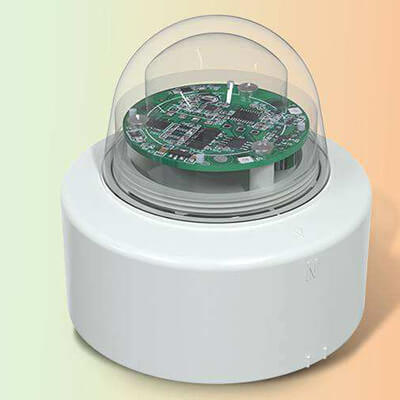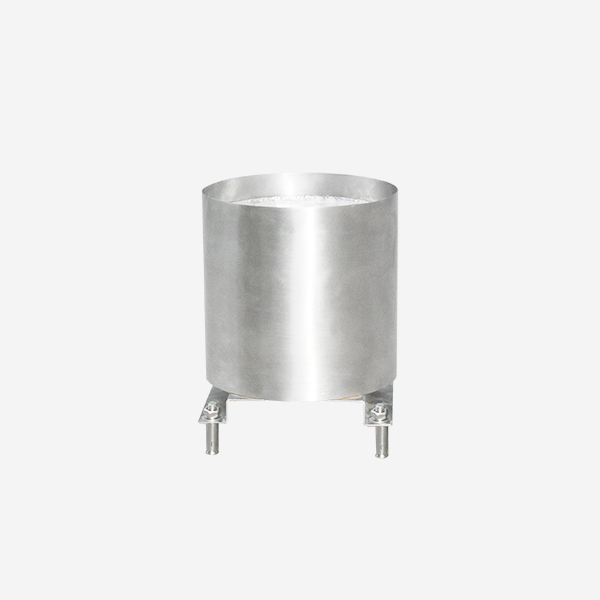Accurate measurements of rainfall have historically been difficult to achieve due to its strong regional and diurnal variability. The scientists found that the accuracy of the rain gauge was closely related to its material, the size of the opening, the height of the opening from the ground, and the surrounding environment. Today, most rain gauges are made of plastic that doesn’t break easily and is more durable.
What is a rain gauge used for?
In the meteorological aspect, rain gauge can record the current amount of rainfall in time, very practical. The bucket rain-gauge is a wired telemetry instrument that can continuously record precipitation over time and measure cumulative precipitation. It is divided into two parts, sensor and recorder, connected by cable.

Optical rain gauge is a new meteorological rain gauge based on photoelectric detection principle, which is mainly used to measure rainfall. The principle of infrared light sensing is to judge the rainfall by using the characteristics of different light transmission characteristics when water droplets exist in the air. Built-in multiple optical probes, strict analysis of the optical path. When the raindrop passes through the sampling space, the raindrop will block the laser, and the optical signal received by the receiving sensor and the electrical signal converted from the optical signal will change.

Tipping bucket rain gauge
Tipper rain gauge is a typical rain gauge for weather station. Working principle of tipper type rain gauge The tipper principle is used to monitor rainfall changes in real time. Tipper type rain sensor is a mechanical bistable structure. Due to gravity, it flips over and sits in a waiting state. The process will generate pulse signals, which will be recorded by wireless communication and reported to the cloud server to provide data support for the command and decision making of industry users and improve the hydrological monitoring capability.

The precision rain gauge automatically records rainfall and relies on an intelligent rain monitoring system to upload data to the data center through wired, GPRS, Ethernet and other communication modes. Users can view the data through the computer or mobile APP platform, such as curve to view the seasonal rainfall, daily rainfall, monthly rainfall, annual rainfall and so on. The historical data can also be exported or saved as an EXCEL file for easy query and reference. The system can track and record the whole process. It integrates data acquisition, recording and storage, and has remote diagnosis and control functions.
Like the tipping bucket rain gauge, the optical rain gauge is also an automatic rain gauge, relying on built-in sensors and other accessories to automatically count rainfall, and upload the data to the cloud platform through wired or wireless means for customers to view.

Conclusion
In the study of meteorological elements, rainfall is an important part of it. Measuring rainfall is of great significance to people’s production and life. For example, whether rainfall can meet the growth of crops in a certain period of time, how to determine the climate conditions and weather forecasts of a certain area. Before the Internet of Things technology was popularized, the monitoring and management of regional rainfall was relatively simple, basically relying on manual reading of data. During periods of heavy rainfall, it is difficult to obtain the latest real-time water level information.
Therefore, it is very important to choose the right measuring tools and measuring methods. Standard rain gauges are loved by meteorological enthusiasts and rainfall researchers. Tipping bucket rain gauges are often used with weather stations. The best place for the automatic rain gauge is outdoor. Optical rain gauges are of great significance to aviation and navigation.
由于其强烈的区域和日变化性,历史上难以准确测量降雨量。科学家们发现,雨量计的精度与它的材质、开口的大小、开口离地面的高度以及周围的环境密切相关。今天,大多数雨量计都是由塑料制成的,不易折断,更耐用。
什么是雨量计?
雨量计是用来测量一定地区一段时间内降水量的仪器(降雪量的测量需要使用雪量计)。雨量计有很多种。大多数雨量计使用毫米作为测量单位,有时测量结果以英寸或厘米为单位。雨量计的读数可手动读取或使用自动气象站,并可根据采集单位的要求改变观测频率。在大多数情况下,收集的雨水在观测后将不再保留,但也有一些气象站将其保留作为污染水平或其他测试的样本。
雨量传感器如何工作?
雨量计的工作原理其实很简单。上图中的那个,和跷跷板模型一样,是雨量计的测量单位。该仪器将连接到电子记录仪。当上面的降雨量达到一定值时,雨水的重量会导致跷跷板跳跃。一键点击,每当它跳动,电子记录仪就会记录一条数据,总共有多少点,有多少条数据传送到电脑,然后用电脑计算出整体数据,形成统计图和一个数据图,然后形成降雨。
雨量计是干什么用的?
在气象方面,雨量计可以及时记录当前降雨量的大小。雨量计中的翻斗式雨量计是一种有线遥测仪器,可以随时间连续记录降水量,测量累计降水量。它分为传感器和记录仪两部分,通过电缆连接。
光学雨量传感器利用光学传感原理来测量雨量。它使用红外光作为测量介质,并具有多个内置光学探头。避免光学雨量传感器检测的外部光线和雾水干扰,使测量结果更准确。与传统的机械传感器相比,小雨传感器体积小、灵敏、智能、易于维护。
雨量计的类型
翻斗式雨量计
翻斗式雨量计如何工作?翻斗式雨量计是典型的气象站雨量计。它是最准确的雨量计。翻斗式雨量计工作原理利用翻斗式原理实时监测降雨变化。翻斗式雨量传感器是一种机械双稳态结构。由于重力,它会倾覆并处于等待状态。该过程将产生脉冲信号进行记录并通过无线通信上报云端服务器,为行业用户的指挥决策提供数据支持,提高水文监测能力。目前市场上常用的翻斗式雨量计材质有专业的 不锈钢雨量计 和 廉价的ABS雨量计。
光学雨量计
光学雨量计是一种基于光电探测原理的新型气象雨量计,主要用于测量降雨量。红外光感应原理是利用空气中存在水滴时不同透光特性的特性来判断降雨量。内置多个光学探头,对光路进行严格分析。当雨滴通过采样空间时,雨滴会阻挡激光,接收传感器接收到的光信号和光信号转换后的电信号会发生变化。当雨滴通过采样空间时,接收传感器的电信号将恢复并进入采样空间。以前的状态。当雨滴穿过采样空间时,
结论
在气象要素的研究中,降雨是其中的重要组成部分。测雨量对人们的生产生活具有重要意义。例如,降雨量是否能满足作物在一定时期内的生长,如何确定某一地区的气候条件和天气预报等。在 物联网 技术普及之前,区域降雨的监测和管理比较简单,基本依靠人工读取数据。在强降雨期间,很难获得最新的实时水位信息。
因此,选择正确的测量工具和方法非常重要。标准雨量计很受天气爱好者和降雨研究人员的欢迎。自卸式雨量计通常与气象站一起使用。自动雨量计的最佳位置是户外。光学雨量计对航空和航海具有重要意义。